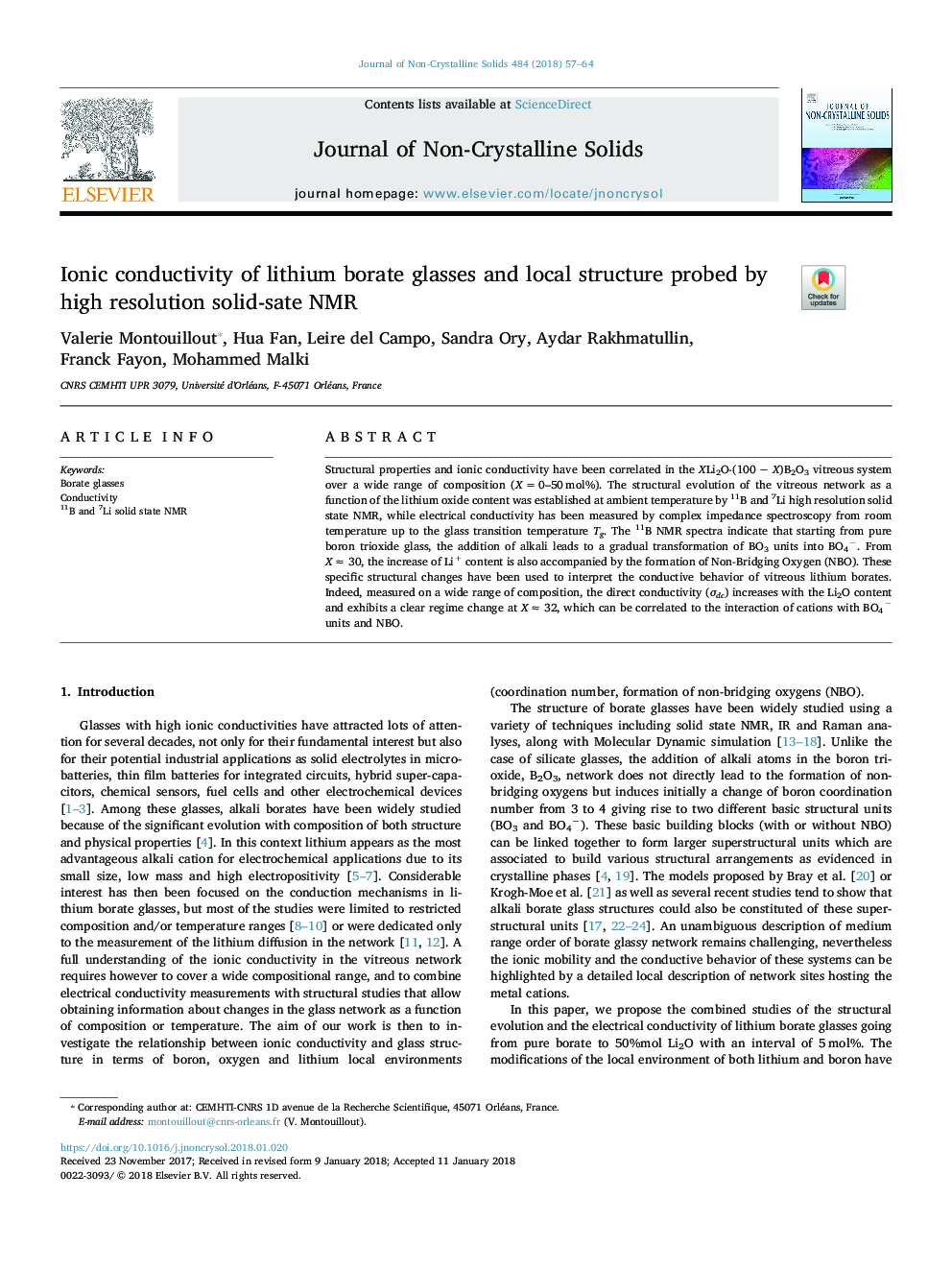| Article ID | Journal | Published Year | Pages | File Type |
|---|---|---|---|---|
| 7900123 | Journal of Non-Crystalline Solids | 2018 | 8 Pages |
Abstract
Structural properties and ionic conductivity have been correlated in the XLi2O-(100â¯ââ¯X)B2O3 vitreous system over a wide range of composition (Xâ¯=â¯0-50â¯mol%). The structural evolution of the vitreous network as a function of the lithium oxide content was established at ambient temperature by 11B and 7Li high resolution solid state NMR, while electrical conductivity has been measured by complex impedance spectroscopy from room temperature up to the glass transition temperature Tg. The 11B NMR spectra indicate that starting from pure boron trioxide glass, the addition of alkali leads to a gradual transformation of BO3 units into BO4â. From Xâ¯ââ¯30, the increase of Li+ content is also accompanied by the formation of Non-Bridging Oxygen (NBO). These specific structural changes have been used to interpret the conductive behavior of vitreous lithium borates. Indeed, measured on a wide range of composition, the direct conductivity (Ïdc) increases with the Li2O content and exhibits a clear regime change at Xâ¯ââ¯32, which can be correlated to the interaction of cations with BO4â units and NBO.
Keywords
Related Topics
Physical Sciences and Engineering
Materials Science
Ceramics and Composites
Authors
Valerie Montouillout, Hua Fan, Leire del Campo, Sandra Ory, Aydar Rakhmatullin, Franck Fayon, Mohammed Malki,
